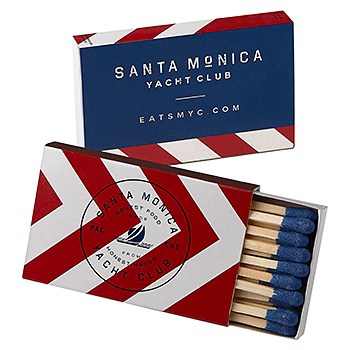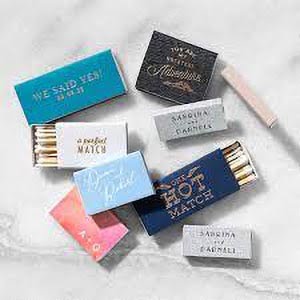A Brief Match History
There is only a brief history of the match in the United States. The market for matches in the United States evolved throughout the twentieth century from wooden stick matches to paper book matches. In the early 1900s, wooden matches were well-established throughout most of the rest of the world. However, in North America, a different trend emerged.
Paper vs. Wooden
Paper book matches were what was found in purses and pockets because they were less expensive to produce. And the matchbook cover was ideal for advertising. By the 1940s, the giveaway matchbook was firmly established as a highly  effective and cost-efficient advertising medium. During the war years, matchbooks were frequently imprinted with patriotic messages and slogans.
effective and cost-efficient advertising medium. During the war years, matchbooks were frequently imprinted with patriotic messages and slogans.
Of course, cigar and cigarette smokers began saving these slogan-ed matchbooks. Matchbooks were popular; they were trendy; they had become a conversation piece. But, above all, they were useful. The popularity of matchbooks and matchboxes soared and by the 1970s, the industry was at its peak.
Matchbook Factories
There were at least a dozen independent match companies in the United States and Canada in the 70s. Each factory had its own product focus. Some factories produced only book matches, while others produced both wooden matches and book matches. There were still others that produced commodity resale matches for grocery stores and for distribution wherever tobacco products were sold.
The industry employed over 2,000 workers and the market for book matches alone was estimated to be more than 35 billion matchbooks per year – that’s 700,000,000,000 lights! (There are 20 strikes in most matchbooks.)
Match Industry Still Thriving
Before 1970, disposable butane lighters did not exist. But a mere 15 years later, lighters had swept 50% of the lights market from matches. This caused half the match factories to close. It took another 15 years for disposable lighters to capture about 95% of the market. At the turn of the 21st century, there were only a handful of match manufacturers in the United States.


Essentially, if you buy domestic matches, they will have been born at Bean. At Promotional Matches, we have been in the match and promotional business for over 25 years. We have hundreds of happy customers. And, yes, we do support American-made matches produced at D.D. Bean.


